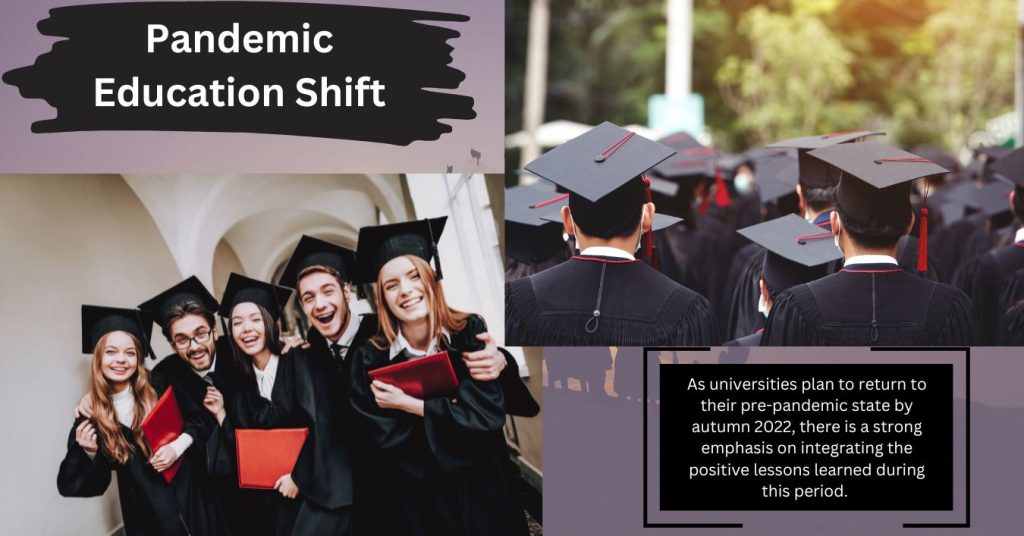Pandemic Education Shift: A New Era of Comprehensive Learning
Over the past year and a half, the education sector has undergone a significant transformation. The COVID-19 pandemic forced educators and students alike to adapt to new modes of learning, often under challenging circumstances. Many recall the frustrating days Pandemic Education Shift of battling internet connections to attend online classes via platforms like Microsoft Teams. This period has been a baptism of fire for universities as they sought to deliver quality online learning experiences.
As universities plan to return to their pre-pandemic state by autumn 2022, there is a strong emphasis on integrating the positive lessons learned during this period. The primary shift in the educational landscape is the adoption of a "blended model" of teaching, which Pandemic Education Shift combines the flexibility of online lectures with interactive in-person activities such as labs, seminars, workshops, and Q&A sessions.

Liz Barnes, the vice-chancellor of Staffordshire University, who has led a review into online learning, explains that the move towards online lectures does not mean the end of face-to-face interactions. Instead, it signifies a departure Pandemic Education Shift from large lectures with 200 or more students, favoring online delivery for these sessions. This approach is believed to be more effective and can enhance the learning experience.
Different universities and courses are planning varying degrees of online learning, making it essential for prospective Pandemic Education Shift to consider what works best for them. Generally, practical courses tend to have more face-to-face contact hours compared to academic degrees that involve extensive reading. When choosing a university, students should reflect on their personal preferences and circumstances. For instance, those who plan to commute might prefer a schedule with only a few days on campus and the rest online. Conversely, students who thrive on in-person interactions for motivation and socializing may prefer more on-campus time.
Given that most university websites may not provide detailed information on how individual courses will be taught, it's advisable for students to contact Pandemic Education Shift universities directly or attend open days to get a clearer picture. Barnes notes that the next academic year will likely be a transitional phase as institutions adjust post-pandemic, with potential changes in 2022.
Concerns about the value of online teaching compared to traditional in-person instruction are common. However, Prof Allison Littlejohn, an academic at UCL specializing in learning technology, assures that online teaching does not equate to lower quality Pandemic Education Shift. In fact, preparing and producing online teaching materials often requires more time and effort than on-campus lectures. Universities are increasingly shifting lectures online because they believe it enhances learning.
To mitigate challenges associated with online learning, students can adopt several strategies. Littlejohn advises against watching entire hour-long Zoom lectures in one go. Instead, if the lecture is Pandemic Education Shift, students should combine watching it with active reflection on the content. For live lectures, engaging with peers and academics afterward to discuss ideas and concepts can be beneficial.
Interaction is a crucial element of well-designed online learning. If it's not sufficiently included in the curriculum, students should request more individual or small group sessions from their tutors. Additionally, organizing study groups to discuss Zoom lectures or engage in problem-solving activities can enhance understanding and retention of new ideas and concepts.
The disrupted school experience during the Pandemic Education Shift may also raise concerns about preparedness for university. Ian Dunn, deputy vice-chancellor at Coventry University, advises students to assess their digital learning experiences and identify areas where they might need support. Understanding how universities support students in developing digital skills and managing academic challenges can be crucial for success.
Reflecting on the past year of study during the Pandemic Education Shift can help students identify their learning needs and preferences. It's important to choose a university and a course structure that align with these needs to ensure a fulfilling and effective educational experience.
In summary, the Pandemic Education Shift has reshaped the educational landscape, highlighting the importance of flexibility, interaction, and support in learning. As universities transition to a blended model of teaching, students should consider their personal circumstances and learning preferences to make informed decisions. By leveraging the lessons learned during this period, the future of education can be more adaptive, inclusive, and effective.
Comments (0)